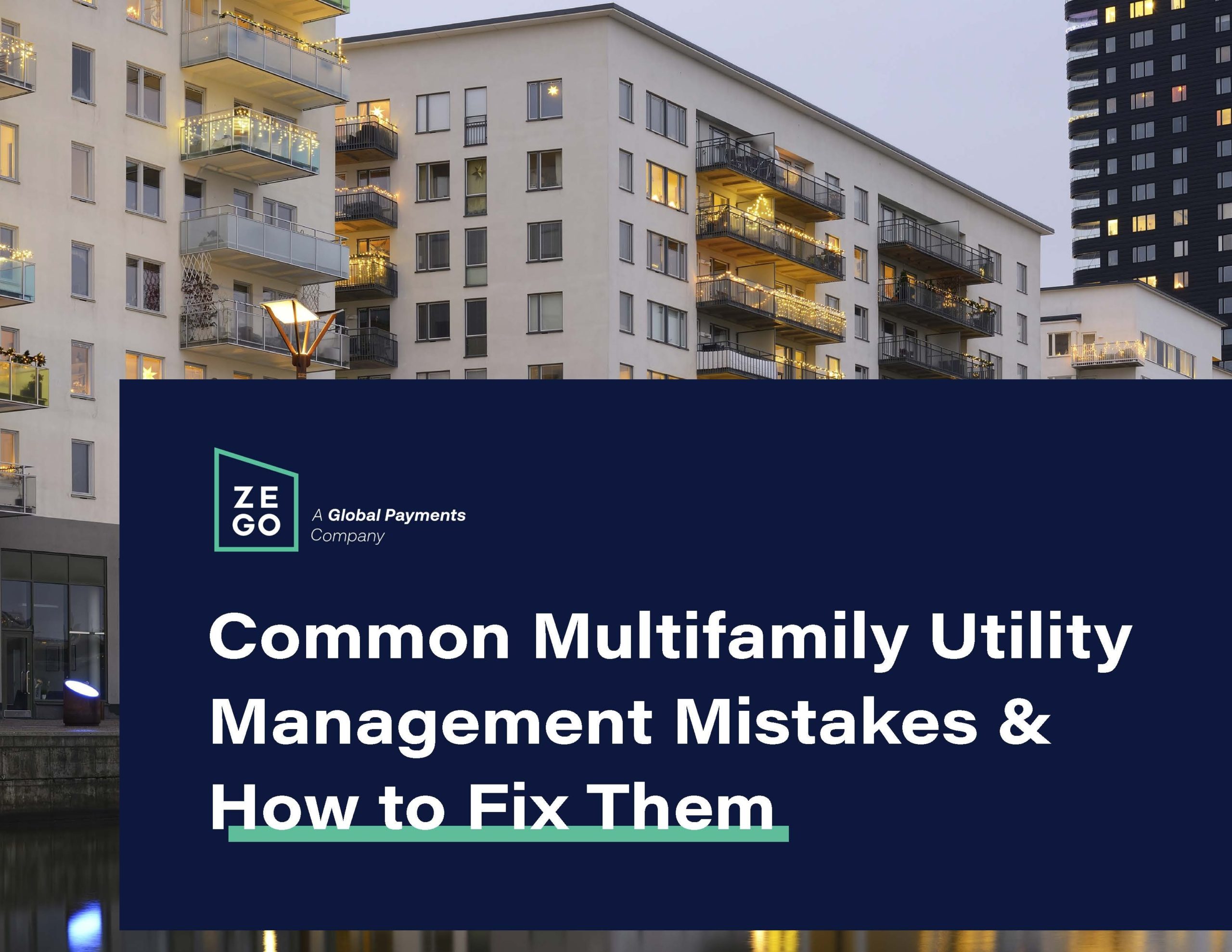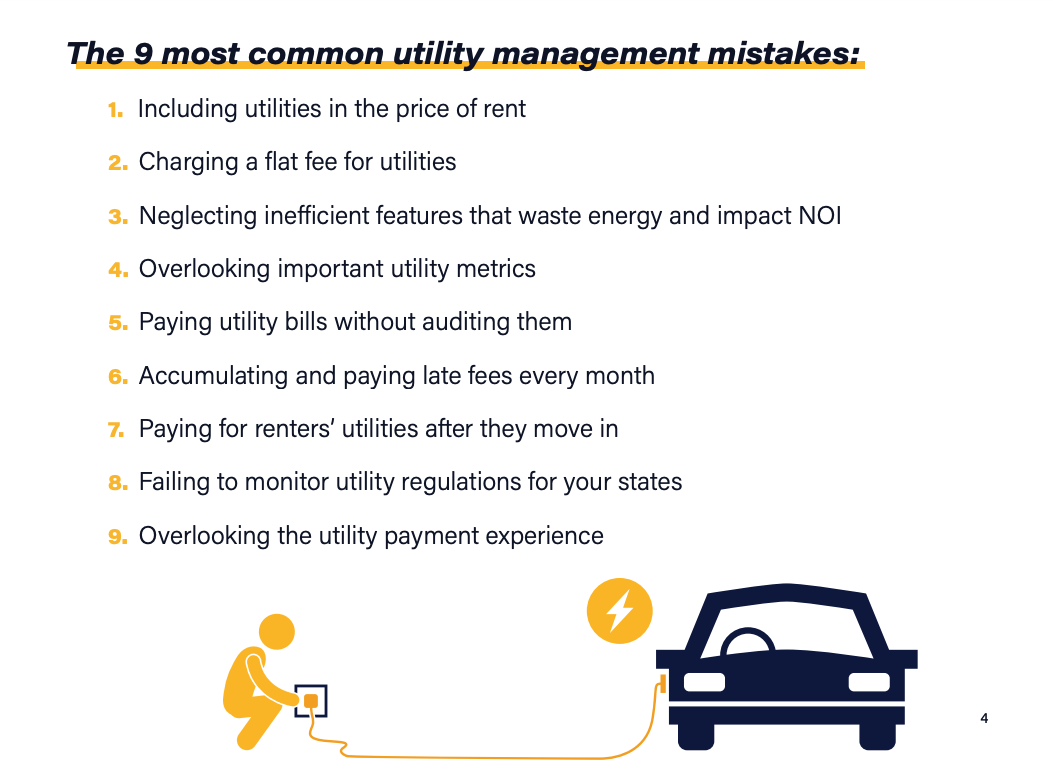5 Best Practices for Maximizing Utility Cost Recovery for Multifamily
Making data-driven decisions is critical to the success of your portfolio, especially when it comes to high-cost items like utilities. But keeping track of key metrics, benchmarking and maximizing utility cost recovery across multiple properties can be challenging. There have probably been plenty of times where you haven’t had enough data to make heads or tails of a situation. Or sometimes, you have so much data, that it’s hard to come to a conclusion about what’s happening.
What is utility cost recovery and how does it work?
Utility cost recovery allows property managers and multifamily operators to efficiently recoup and allocate utility expenses within their communities. When property managers provide essential utilities, it becomes crucial to recover those costs by accurately billing residents based on their individual usage. This approach minimizes financial losses and encourages responsible energy usage, ensuring that those residents who benefit from and use the utilities are accountable for their consumption.
Whether you streamline your utility cost recovery through a utility management software tool or handle this process in-house, utility cost recovery works by measuring and monitoring utility consumption, analyzing utility bills and meter readings, and determining the appropriate allocation or billing methodology to your residents. By implementing effective utility cost recovery practices, property managers can achieve financial stability, promote conservation, and maintain a sustainable environment for their residents.
Here are 5 ways multifamily operators can maximize utility cost recovery:
#1: Identify opportunities for efficiency improvement by benchmarking utility expenses
#2: Analyze your utility cost recovery rates
#3: Identify and alleviate vacant unit costs
#4: Proactively track, identify, and resolve utility equipment issues such as submeter health
#5: Use automation to be proactively notified of anomalies and issues
Improve your utility cost recovery and grow NOI
With a utility management software tool, you can cut through the clutter and get to crucial utility metrics about your property.
Tip #1: Identify opportunities for efficiency improvement by benchmarking utility expenses
Do you have a firm understanding of how much you spend for each type of utility at each of your properties? If you look at your water charges every month across comparable properties, you will be able to quickly identify outliers and opportunities for improved utility cost recovery.
With utility benchmarking, property managers can identify areas for improvement and uncover potential cost savings. Benchmarking helps make data-driven decisions through discovering inefficiencies or areas of high usage, prioritize energy-saving initiatives, and set realistic goals for sustainability and cost reduction for your communities.
The bottom line: When you look at your utility costs across your portfolio, you establish a benchmark for what “healthy” looks like to you. From there, you can take on projects to bring all of your properties to that level.
Tip #2: Analyze your utility cost recovery rates
To begin with, recovering your utility expenses is definitely something your properties should be doing. Assuming you’re already doing that, do you know how much of your utilities you are recovering at each of your properties? This is an important number to know. Regulations govern how much you can collect, and the rules vary by utility, location, etc. You may be doing the best that you can in terms of utility expense recovery, but are you confident in that?
The bottom line: If you don’t understand the regulations in each area, you could be leaving money on the table or overcharging which opens you up to compliance risks. Stay on top of local utility billing regulations, or consult with a utility billing provider who can guide you on how to recover the maximum allowable amount for your area.
Tip #3: Identify and alleviate vacant unit costs
Are you confident that the utilities across all of your units are in the current new resident’s name? When a resident moves into a new unit, they have a lot on their mind. Intentional or not, they may forget to transfer one or more utilities into their name. Again, assuming you’re charging residents for their use, this neglect directly impacts your bottom line. The sooner you know that a utility has not been transferred to the new resident’s name, the sooner you can fix the issue. You may also choose to levy a penalty fee if the issue is not resolved after a certain grace period, which reimburses your property team for administrative and operational costs associated with issue resolution.
The bottom line: Actively tracking “vacant unit costs” is an important operational insight that directly impacts your ability to recover utility costs.
Once you are confident that your property is performing optimally based on your benchmarks (i.e. you’re conserving, your utility cost recovery is optimized, you’re at max efficiency) a utility expense management tool can help you proactively track your performance going forward so any anomalies are quickly identified and you can resolve them to go back to peak state.
Tip #4: Proactively track, identify, and resolve utility equipment issues such as submeter health
Submeters offer the most precise method for utility cost recovery because they give you exact readings on how much utilities are being used in each of your units. They also promote conservation by placing the impact of their usage directly on the resident. But they’re equipment, and equipment needs to be maintained and managed. Using a built-in intelligence tool, you can proactively monitor submeter health to make sure they are giving accurate readings and are not in need of repair. Without accurate reads, you may be undercharging your residents for utility consumption. This is especially important for managing efficient utility costs for rentals.
The bottom line: Plug “leaks” in your submeters (pun intended) to be sure you are accurately recovering your utility costs from residents.
Tip #5: Use automation to be proactively notified of anomalies and issues
Even with the best of intentions, keeping track of utility expenditures, recovery rates, and potential “leakages” is a challenge. If you have a utility management solution, it should allow you to set thresholds for metrics that matter to you, and receive notifications if they are exceeded. You can also notify colleagues via automated messages so they can take action quickly. For more time savings, customize your dashboards so you can easily visualize metrics that matter as soon as you log in. That way you won’t have to recreate the wheel each time you need an answer about utility data.
The bottom line: Automating the utility process not only saves time but also decreases errors when it comes to utility bills and payments.


FREE GUIDE
Common Multifamily Utility Management Mistakes and How to Fix Them
Utility expenses are increasingly becoming a liability for property managers. Find out how you can save money and boost NOI through automated utility management, including recouping utility costs from residents, identifying and ending utility theft, and so much more!